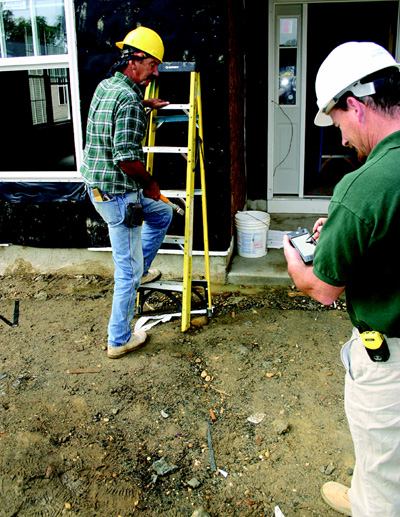WE ALL KNOW THAT time is money, making it easy to see that time wasted is money lost—and there may be no industry where that point is made more plainly than in home building.
Mark Hodges is the senior vice president for corporate operations at Hovnanian Enterprises, the nation’s seventh largest home builder in 2005. Hovnanian’s construction cycle time is typical for the industry: about 150 days per unit. But according to Hodges, for 75 or sometimes even as many as 100 of those 150 days, a typical house sits empty all day, with no critical-path work being done.
Given the money wrapped up in a house under construction, Hodges observes, each “empty-house day” costs a builder about $100—“and that’s really a conservative number.” Multiply the forgone thousands per house by Hovnanian’s 17,000-unit annual volume, he says, and it amounts to significant money.
Trickle-down delays. Where do the empty days come from? Every disruption in the original schedule, explains Hodges, ripples through later weeks of work. “Kick the schedule out one day,” he says, “and that costs you five—because the downstream subs can’t react quickly enough to fill that gap that’s been created. ‘Oh,’ says the next outfit, ‘he can’t come Monday? He’s coming on Tuesday, and he’ll finish on Thursday? Well, we can’t come on Friday; we’ll have to come Monday or Tuesday.’ And then the third trade partner says, ‘I can’t come on Wednesday; I’ll have to come Friday or Monday.’ You lose three or four additional days because there are three or four companies in play.”
The cascade of delays can turn the whole management problem on its head, observes Hodges: “The schedule becomes absolutely unreliable and unpredictable. And then the trades tell you when they’re coming, instead of you saying, ‘This is the day you need to be here.’”
Drive-by scheduling. Even worse is when the tradesmen don’t learn that the schedule has slipped until they show up to work on a house that isn’t ready. “Trade partners call them dry runs,” says Hodges. “It costs them money, and it costs us money. And if the trade partners can’t rely on your schedule, they start going to the communities where builders do provide reliable schedules.” The builder who can’t provide accurate info rmation ends up last in line.
Weather, breakdowns, accidents, or government red tape can foul up any schedule. But good management, says Hodges, can minimize the downstream effect. Hovnanian’s reforms include two major innovations: centralized schedule updating and consolidation of trade partners.
TUNING THE SCHEDULE Hovnanian’s 400 neighborhoods are staffed by as many as 600 to 1,000 on-site superintendents (some projects are large enough to keep multiple supers busy). Says Hodges, “Perhaps 30 percent to 40 percent of any builder’s construction managers are adept schedulers—people who know how to manage the critical path of a schedule.” To take that load off the field supervisors’ shoulders, Hovnanian has brought the schedule management process into the company’s central office.
“The field managers are not abdicating responsibility for the cycle time,” says Hodges. “But if you centrally schedule and procure materials, the construction manager’s primary responsibility becomes updating the status of the homes under construction. The back office can manipulate those calendars, update the trade partners’ schedules, schedule material deliveries, and produce more reliable lookaheads of when those homes will be ready for work.”
Construction supers are expected to update every house’s status daily by 3:00 p.m.; Hovnanian’s central office faxes and e-mails updated look-aheads at 6:00 p.m. the same day. Instead of field managers having to apply changes to complex house schedules and notify each trade partner individually, scheduling experts in Hovnanian’s back office handle all the schedule reworking and notifying of trades. As a result, the company has cut the time its field managers spend on scheduling from three hours a day to just half an hour.
Learn more about markets featured in this article: Kansas City, MO.



